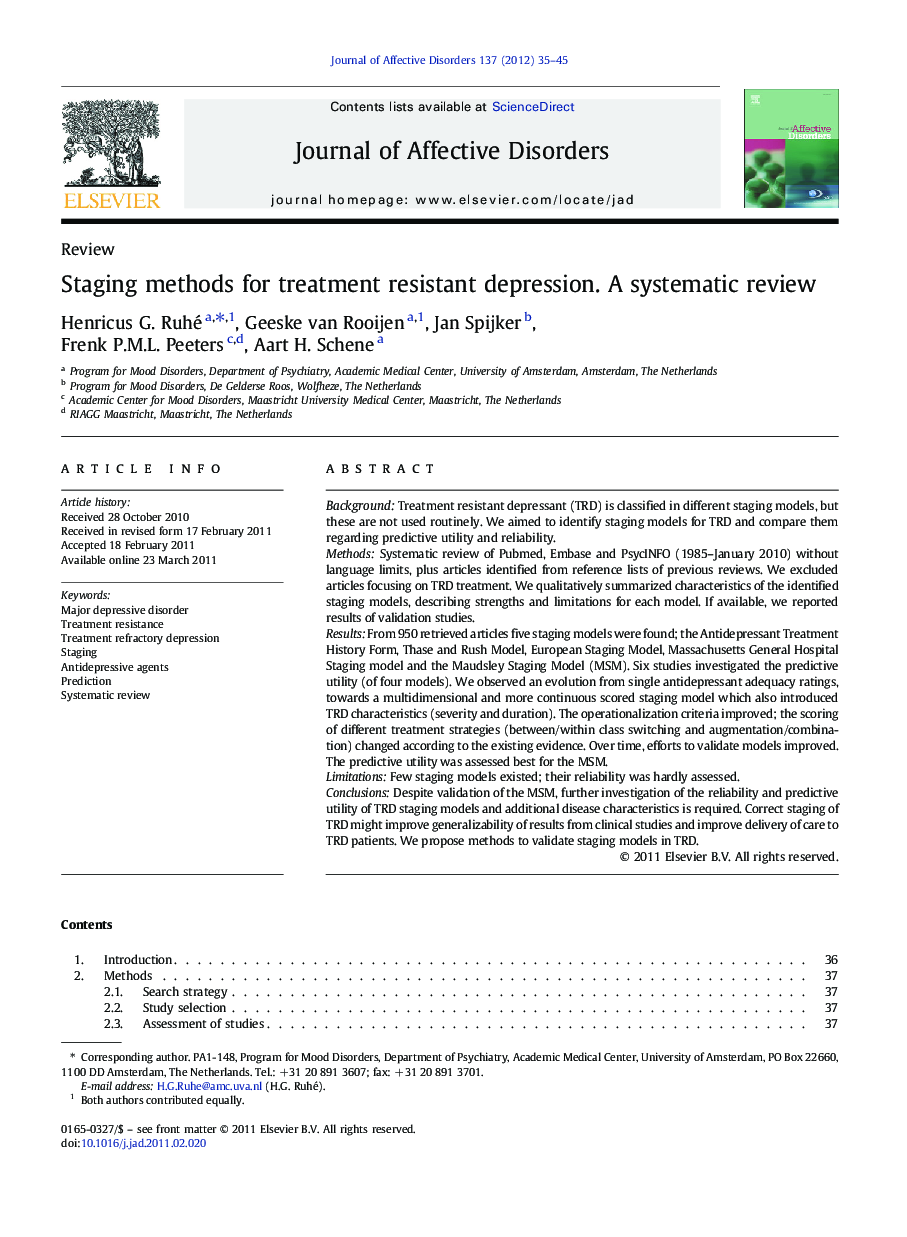| کد مقاله | کد نشریه | سال انتشار | مقاله انگلیسی | نسخه تمام متن |
|---|---|---|---|---|
| 6235285 | 1608182 | 2012 | 11 صفحه PDF | دانلود رایگان |

BackgroundTreatment resistant depressant (TRD) is classified in different staging models, but these are not used routinely. We aimed to identify staging models for TRD and compare them regarding predictive utility and reliability.MethodsSystematic review of Pubmed, Embase and PsycINFO (1985-January 2010) without language limits, plus articles identified from reference lists of previous reviews. We excluded articles focusing on TRD treatment. We qualitatively summarized characteristics of the identified staging models, describing strengths and limitations for each model. If available, we reported results of validation studies.ResultsFrom 950 retrieved articles five staging models were found; the Antidepressant Treatment History Form, Thase and Rush Model, European Staging Model, Massachusetts General Hospital Staging model and the Maudsley Staging Model (MSM). Six studies investigated the predictive utility (of four models). We observed an evolution from single antidepressant adequacy ratings, towards a multidimensional and more continuous scored staging model which also introduced TRD characteristics (severity and duration). The operationalization criteria improved; the scoring of different treatment strategies (between/within class switching and augmentation/combination) changed according to the existing evidence. Over time, efforts to validate models improved. The predictive utility was assessed best for the MSM.LimitationsFew staging models existed; their reliability was hardly assessed.ConclusionsDespite validation of the MSM, further investigation of the reliability and predictive utility of TRD staging models and additional disease characteristics is required. Correct staging of TRD might improve generalizability of results from clinical studies and improve delivery of care to TRD patients. We propose methods to validate staging models in TRD.
Journal: Journal of Affective Disorders - Volume 137, Issues 1â3, March 2012, Pages 35-45